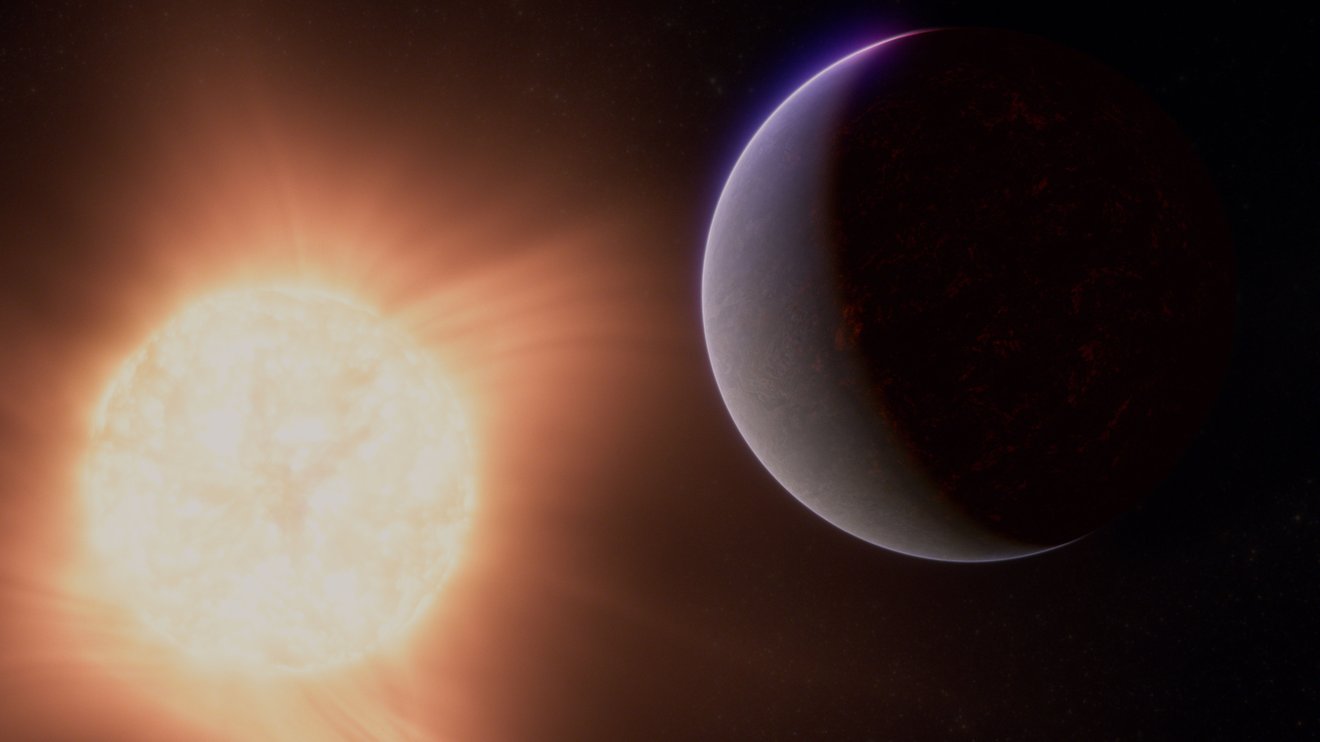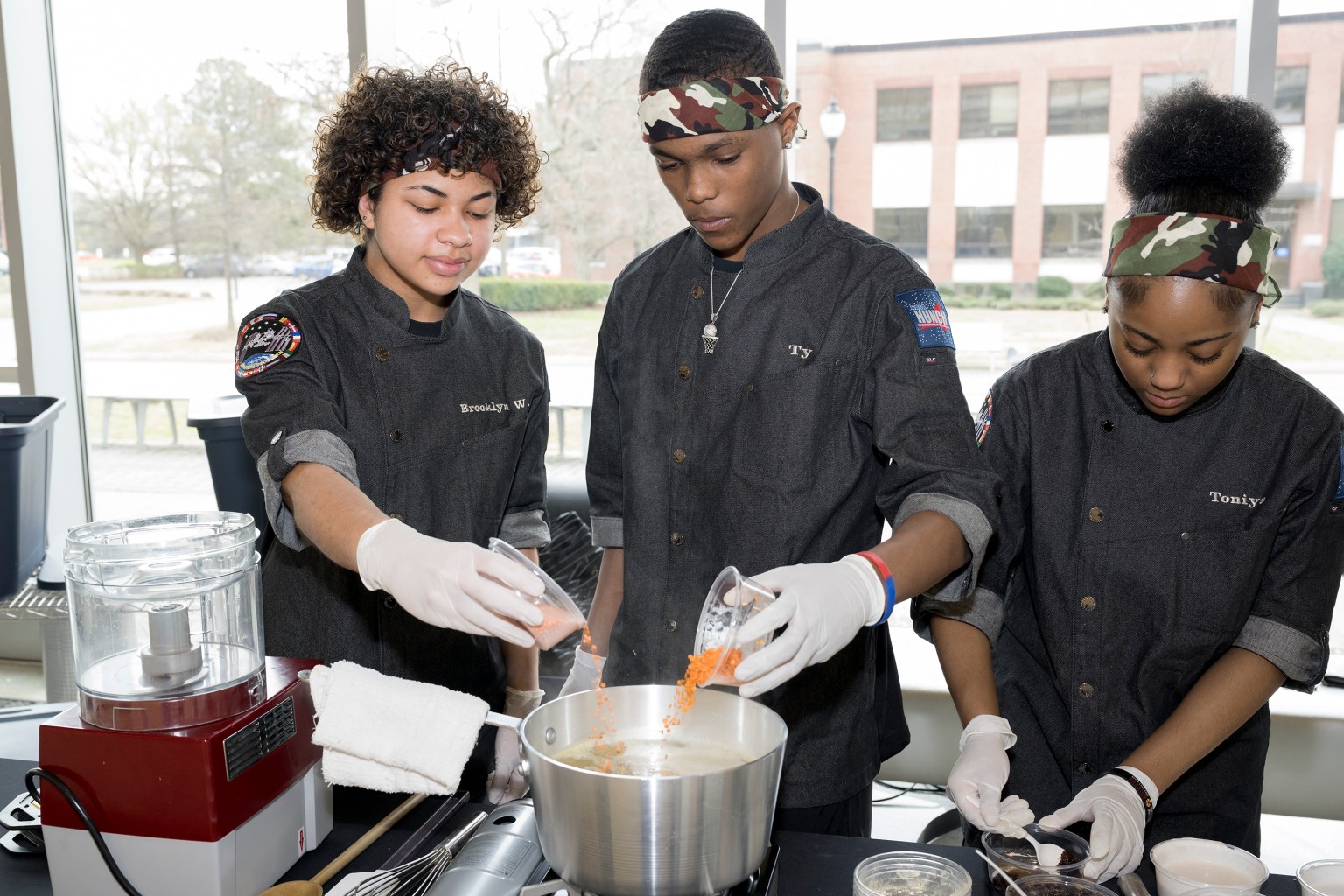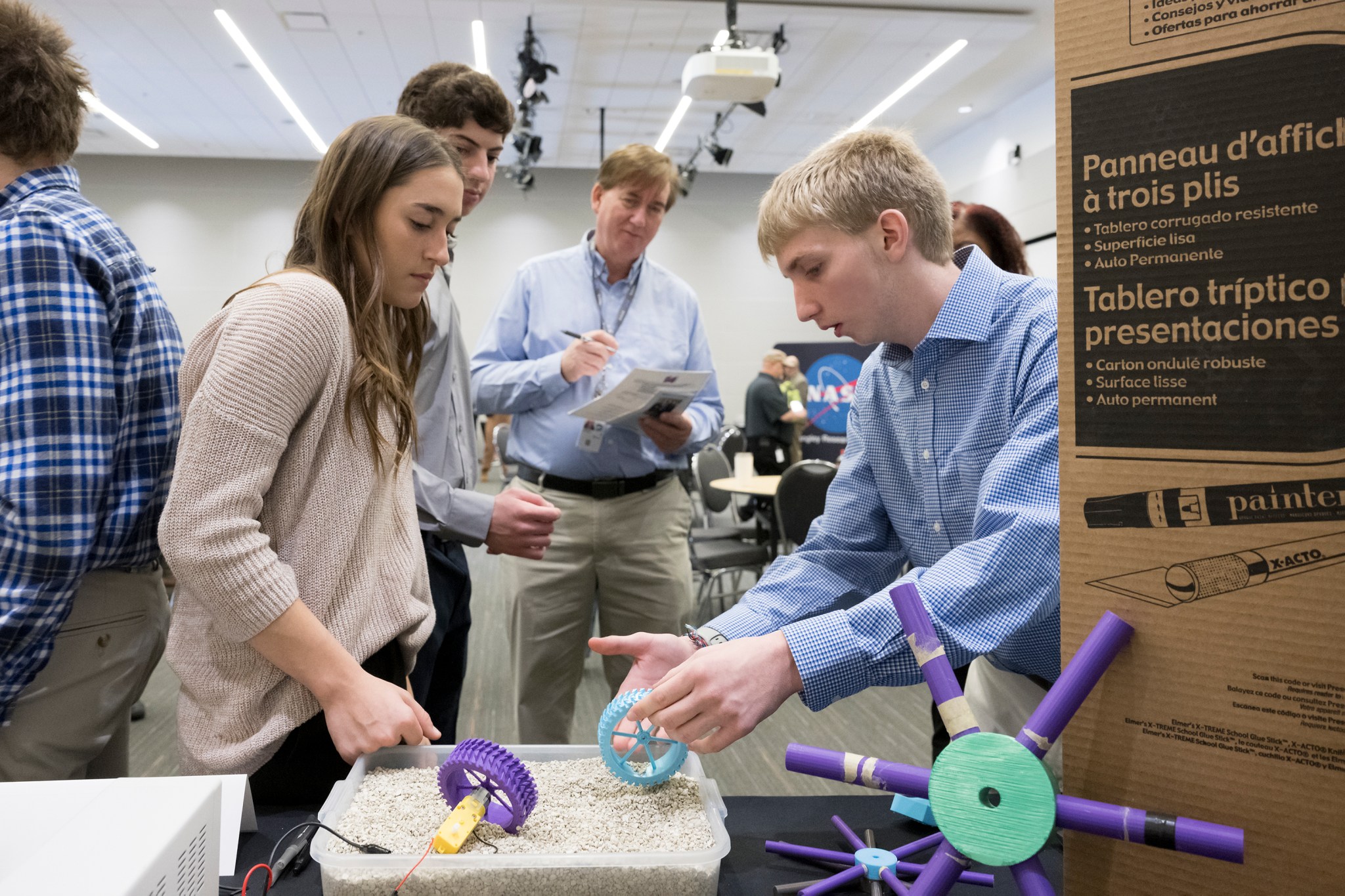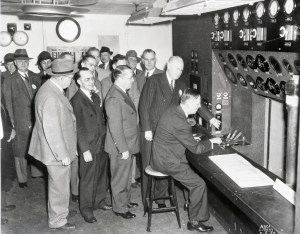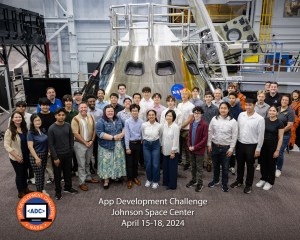Students are paving the way using their engineering and culinary skills through NASA’s High school students United with NASA to Create Hardware (HUNCH) program. Students traveled to NASA’s Langley Research Center to participate in the NASA HUNCH Preliminary Culinary Challenge and Critical Design Review. Teams from local and out of state high schools participated both in-person and virtually to take part in the nationwide program on Feb. 27-28.
HUNCH develops high school students in many ways by highlighting their talents in order to contribute to NASA’s missions. The program provides students hands-on experience with the space agency — such as building NASA-designed parts for use by astronauts, agency personnel, or food for astronauts to enjoy.
“The HUNCH Program can change the trajectory of a student’s life, by providing various avenues beyond the STEM (science, technology, engineering, and math) fields and opportunities to participate in the global effort to research in space,” said Yolanda Watford Simmons, Program Manager of Langley’s Engineering Directorate and the center’s HUNCH program.
A Stew for Space
Each high school prepared a soup or stew and served ten different judges. The goal is to one day feed their dishes to astronauts aboard the International Space Station (ISS). The culinary challenge consisted of five high school teams who created five different entrées, The entrants were Virginia schools Bridging Communities Regional Career &Technical Center, Gloucester High School, Landstown High School, Phoebus High School, and Lake Washington Institute of Technology in Kirkland, Washington.
Participating student teams are tasked to come up with their most creative recipe. They are given strict nutritional guidelines while creating a recipe, such as staying under a certain sodium level, fat, calories, fiber, etc. Then, the teams work for a full semester perfecting their dish.
“This is such an exciting opportunity. For one, I love cooking and it’s NASA!” said Seraphina Arnold, Junior from Landstown High School. “It was a fun challenge working to come up with our stew and it helps to get a cooking challenge under our belts which will ultimately help with our culinary school applications.”
Each team vied to make it to the final 10 national teams that will compete at NASA’s Johnson Space Center in Houston, Texas, on April 15, where their work will be judged by Johnson Food Lab personnel, industry professionals, the ISS Program Office, and astronauts for quality and taste. They’ll also be rated on a required research paper and presentation video.
Phoebus High School and Landstown High School’s stews ranked among the top ten schools nationally and will compete in finals. The winning entrée, to be announced in May, will be created by the Johnson Space Food Lab and sent up to the space station for astronauts to enjoy.
Creating Innovative Solutions for the ISS
The Center also hosted a critical design review (CDR) on Feb. 28 for ten teams of high school students. The CDR included design and prototype projects and biomedical science projects. The Virginia high school teams — Grafton High School, Independence High School, Landstown High School, New Kent High School, Spotswood High School, Stonebridge High School, Warhill High School, and Tuscarora High School – had to present their projects to reviewers on site. North Carolina School of Science & Mathematics and Woodside High School attended the review virtually. Distinguished guest included Delegate Jeion Ward who extended a warm welcome to the students.
During the mid-year project review session at Langley, the students received feedback from NASA personnel and NASA retirees. Each school was assigned a NASA HUNCH mentor and received guidance with their projects. NASA HUNCH mentors included Dr. GuGu Rutherford, Przemyslaw “Miko” Coleman, Dr. Narasimha Prasad, David Paddock, Craig Jones, Andrew Paddock, Iovanka Todt, Andy Ramlatchan, and Douglas Weber.
Bill Craig, the student sponsor for Tuscarora High School expressed the importance of the CDR and its impact on his students
“I want them to have real world experience and that’s what this offer is – the ability to work with real engineering situations,” said Craig. “The review allows them to have the opportunity to work with deadlines that they don’t get to just make up and maybe miss or something like that. There is accountability.”
Many of the projects are items personally requested by ISS crew to help ease living conditions aboard the station, giving students the opportunity to really make an impact on the lives of astronauts. Other projects come from flight crew systems and operational groups at NASA that need additional idea development.
The final review will be on April 16 at Johnson. The following schools advanced to finals for their respective projects: Grafton High School’s Micro-g Dice Rollers, Landstown High School’s 3D Printed Medical Devices, and Warhill High School’s 3D Printed Medical Devices.




